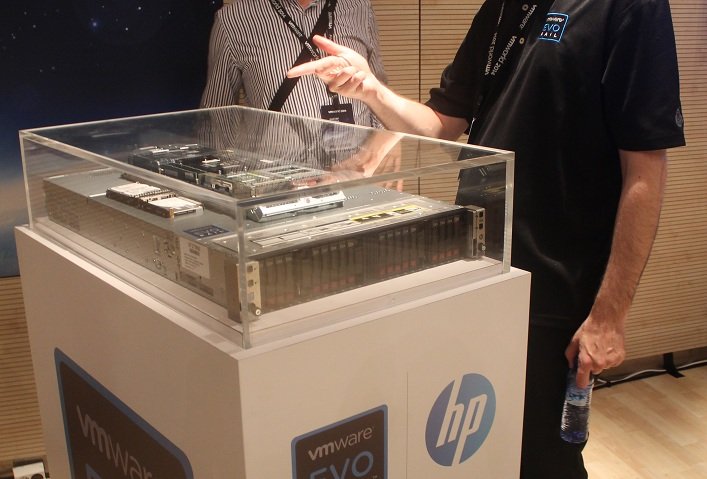HP is taking part in VMware's EVO:RAIL program, in which eight vendors are building ultra-converged hardware according to VMware's specifications. But HP is hedging its bets, and delivering a different flavor of the same hardware at the same time, without the VMware logo, as part of its ConvergedSystems range.
EVO:RAIL was introduced at the US VMworld event in August, when six vendors, including Dell and Fujitsu, signed up to deliver the EVO:RAIL systems - a 2U system containing four processor modules, specified by VMware, and loaded with VMware software.
Four of these units can be clustered together, making a system that scales up to support potentially around 1000 users. This week the EVO party was joined by HP and Hitachi.
Parallel Rails?
HP announced its 200-HC EVO:RAIL product at the European VMworld event in Barcelona this week, along with the ConvergedSystems version, known as the 200-HC StoreVirtual. The two are very similar, but the HP ConvergedSystems build is optimised for storage, and has optional solid state drives (EVO:RAIL systems must have one hard drive and at least three solid state drives).
VMware says EVO:RAIL can be plugged in and set up in around 15 minutes - and is running an EVO:RAIL challenge at VMworld. At the time of writing the best time is 17 minutes. HP believes its ConvergedSystems build will be easier to set up as it involves even less typing.
There's no official pricing for HP's products yet, but sources suggested that the EVO:RAILS version would be somewhat cheaper than the ConvergedSystem build. For comparison, the Dell EVO:RAIL product, on show at VMworld, costs US$120,000 for a 13Tbyte system.
What is the differentiation?
Tight hardware specifications are needed, VMware's senior director for EVO:RAIL Mike McDonough told us, in order to provide reliability and predictability for users.
"A prescriptive hardware design gives a a level of control," said McDonough. Because hardware compatibility is a given, software patches can be packaged up and shipped to end users automatically, without any interventiobn by customers or users,
Qualified EVO Partners (QEP) like HP and Dell, are required to make EVO:RAIL systems according to strict specifications, much like Android or Windows phones. So how do they differentiate their products?
Both HP and the other new EVO:RAIL partner Hitachi stressed that their management software is strong. HP is rolling out OneView, a promised unified screen for managing all HP's tech products.
A Hitachi spokesman also emphasised a role for EVO:RAIL in the company's unified communication products.
HP of course has another problem, which is establishing a difference between the ConvergedSystems range and the ConvergedSystems boxes - in particular the 200-HC StorageVault which is, as we noted, the same product.
The message here is that HP's ConvergedSystems are designed for small-to-medium businesses, although the EVO:RAIL products go down to smaller VM numbers (say 30).

